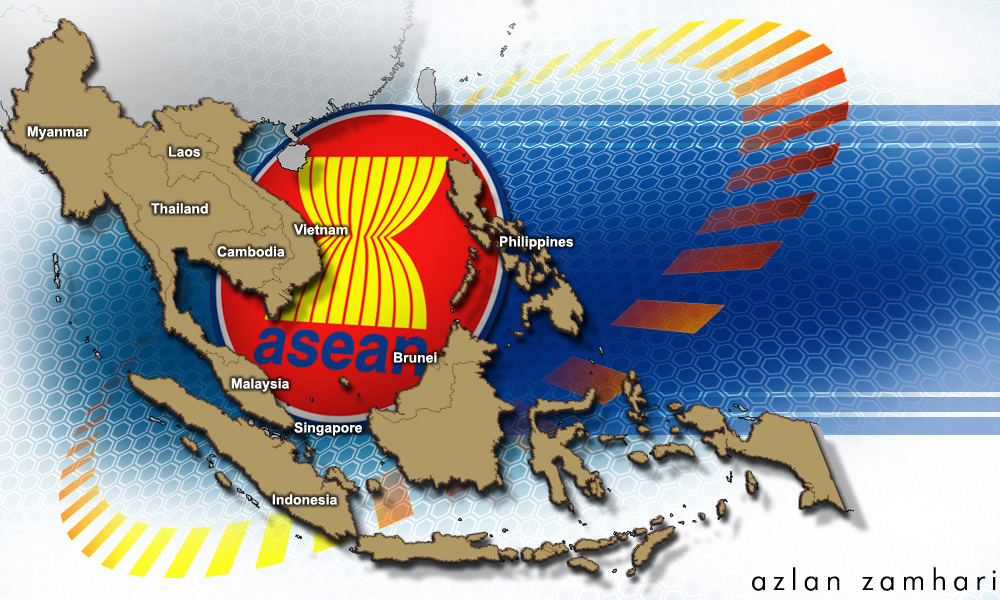While disputes are common features of international relations, territorial-related disputes are the most complicated and difficult ones to resolve.
Such disputes may not only escalate the growing tensions between states, but they may also, in all likelihood, give rise to armed conflicts.
Ergo, under international law, any peaceful methods that may be able to resolve any international disputes are strongly encouraged. International law invariably motivates parties to pursue such resorts.
Hence, many international treaties such as the United Nations (UN) Charter, the Bogota Pact, or the Manila Declarations, etc, contain specific provisions cajoling parties in any dispute to settle it by resorting to pacific settlement.
Though Article 33 of the UN Charter outlines several common mechanisms in settling disputes such as by way of negotiation, inquiry, conciliation, mediation, arbitration, and judicial settlement, the same provision equally permits the disputants to resort to regional agencies or arrangements or other peaceful means of their own choice.
Even flipping a coin to resolve a dispute is duly recognised under international law.
The embedded principle governing international law is the sovereign equality of all members of the UN. This inviolable tenet is duly entrenched in Article 2 (1) of the UN Charter.
By virtue of this article of faith, the sovereign right of even a small country should therefore be respected and protected at all cost. Bullying and intimidation have no place at all under international law.
China claims vast swathes of ocean
The 2023 edition of China’s “standard map” - published Monday on China’s Natural Resources Ministry website - claims that part of Malaysia’s maritime area off Borneo, as well as Taiwan and swathes of the South China Sea, is part of its territories seems to alter such a well-entrenched position by completely ignoring Article 2 (1) of the UN Charter.
In essence, the South China Sea dispute entails two components, namely the overlapping jurisdictional claims and the territorial dispute over groups of mid-ocean islands.
According to international law expert Dong Manh Nguyen, the South China Sea dispute would be regarded as one of the most complex disputes in East Asia, if not of the world.
Worse still, this dispute remains a dangerous source of potential conflict which may turn into a serious international conflict if the same is not properly managed and abated.

The “2023 edition” of China’s standard map was put up on the website of the cartographic service hosted by China’s Natural Resources Ministry during the so-called “National Mapping Awareness Publicity Week”.
The controversial map has also covered the exclusive economic zone maritime areas of Malaysia in Sabah and Sarawak, Brunei, the Philippines, Indonesia, and Vietnam, as well as several areas in India.
As far as Malaysia is concerned, it has categorically rejected such a unilateral claim by China.
In my view, Malaysia is absolutely right in not recognising China's claim in that under international law, China - with due respect - has no legitimate basis at all to make such a preposterous claim.
World court shot down China’s claims
Be that as it may, the Malaysian Foreign Ministry is also right in maintaining its legal position that such a startling map holds no binding authority over Malaysia.
Such a self-proclaimed map reflects the bewildering “nine-dash line” around the South China Sea, which includes several small islands and islets claimed by Southeast Asian countries such as Vietnam, Philippines, Brunei, Malaysia, and Indonesia.
Al Jazeera reported that the tongue-shaped nine-dash line is based on Chinese historical records dating to the Xia dynasty, nearly 4,000 years ago.
In 2016, however, the Permanent Court of Arbitration held in its 497-page ruling that there was no legal basis for China to claim historic rights to resources within the sea areas falling within the nine-dash line.
China not only boycotted the suit brought by the Philippines, but it also rejected the ruling on the grounds that the islands had exclusive economic zones and the Chinese people have more than 2,000 years of history of activities there.

To be fair to China, it was not the only country that had boycotted the international judicial organ. The United States did the same when Nicaragua filed its claims against the former before the International Court of Justice (ICJ).
The only difference was that the United States initially participated in the Nicaraguan suit against it and, in turn, raised a few preliminary objections before the world court.
However, when the ICJ dismissed all of its preliminary objections, the United States then opted to completely boycott the proceeding.
Anyway, based on such a historic decision, it is plain and obvious that China’s so-called “nine-dash line” does not hold any water.
It was duly superseded by the 1982 UN Convention on the Law of the Sea (UNCLOS). Thus, China’s maritime claim on the South China Sea has no iota of merit whatsoever.
A non-binding code?
In its official communique rejecting the 2023 edition of China’s “standard map”, Malaysia also reiterated that it remains committed to cooperating to ensure all parties implement the Declaration on the Conduct Parties in the South China Sea comprehensively and effectively.
It is also committed to effective and substantive negotiations on the Code of Conduct (COC) in the South China Sea, with the goal of finalising the COC as soon as possible.
Asean has sought to tamp down tensions by speeding up talks between the ten-nation bloc and China on the COC for the South China Sea.

As far as the COC is concerned, many experts have recommended that the code include a list of prohibited activities such as land reclamation, the militarisation of occupied atolls, and harassing ships belonging to other claimants.
While some Southeast Asian countries may be very eager to get such a list on the table, China definitely is not keen to accept such an idea.
For the COC to add value to the non-binding 2002 Asean-China Declaration on the Conduct of Parties (DOC) in the South China Sea, Institute of Southeast Asian Studies researcher Ian Storey is of the view it needs to include a list of tension-generating activities the claimants should desist from.
Asean has to promptly finalise the legal status of the code either by making it a binding treaty or a mere soft law without having strong teeth to bite.
As the nub of the problem between some Asean countries and China entails the issue of China’s unilateral maritime claim based on the disputed “nine-dash line”, China will probably try its best to push back in finalising the code.
Finally, if the COC has no legal force, Asean has to expect any transgressor of the code to act with impunity.
After all, with a non-binding code, nobody may force anybody to adhere to its terms. In other words, such a code is no more than an otiose treaty. - Mkini
MOHAMED HANIPA MAIDIN is a former deputy minister in the prime minister’s department. He is also a practising lawyer.
The views expressed here are those of the author/contributor and do not necessarily represent the views of MMKtT.




No comments:
Post a Comment
Note: Only a member of this blog may post a comment.